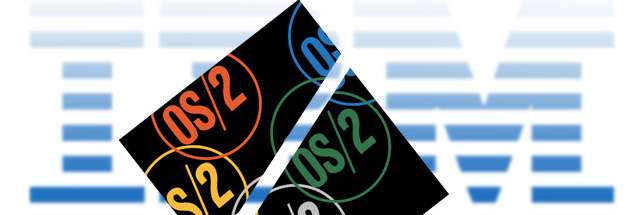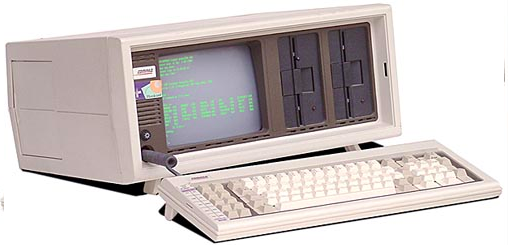
Half an operating system: The triumph and tragedy of OS/2

It was a cloudy Seattle day in late 1980, and Bill Gates, the young chairman of a tiny company called Microsoft, had an appointment with IBM that would shape the destiny of the industry for decades to come.
He went into a room full of IBM lawyers, all dressed in immaculately tailored suits. Bill’s suit was rumpled and ill-fitting, but it didn’t matter. He wasn’t here to win a fashion competition.
Over the course of the day, a contract was worked out whereby IBM would purchase, for a one-time fee of about $80,000, perpetual rights to Gates’ MS-DOS operating system for its upcoming PC. IBM also licensed Microsoft’s BASIC programming language, all that company’s other languages, and several of its fledging applications. The smart move would have been for Gates to insist on a royalty so that his company would make a small amount of money for every PC that IBM sold.
But Gates wasn’t smart. He was smarter.
In exchange for giving up perpetual royalties on MS-DOS, which would be called IBM PC-DOS, Gates insisted on retaining the rights to sell DOS to other companies. The lawyers looked at each other and smiled. Other companies? Who were they going to be? IBM was the only company making the PC. Other personal computers of the day either came with their own built-in operating system or licensed Digital Research’s CP/M, which was the established standard at the time.
Gates wasn’t thinking of the present, though. “The lesson of the computer industry, in mainframes, was that over time people built compatible machines,” Gates explained in an interview for the 1996 PBS documentary Triumph of the Nerds. As the leading manufacturer of mainframes, IBM experienced this phenomenon, but the company was always able to stay ahead of the pack by releasing new machines and relying on the power of its marketing and sales force to relegate the cloners to also-ran status.
The personal computer market, however, ended up working a little differently. PC Cloners were smaller, faster, and hungrier companies than their mainframe counterparts. They didn’t need as much startup capital to start building their own machines, especially after Phoenix and other companies did legal, clean-room, reverse-engineered implementations of the BIOS (Basic Input/Output System) that was the only proprietary chip in the IBM PC’s architecture. To make a PC clone, all you needed to do was put a Phoenix BIOS chip into your own motherboard design, design and manufacture a case, buy a power supply, keyboard, and floppy drive, and license an operating system. And Bill Gates was ready and willing to license you that operating system.

IBM went ahead and tried to produce a new model computer to stay ahead of the cloners, but the PC/AT’s day in the sun was short-lived. Intel was doing a great business selling 286 chips to clone companies, and buyers were excited to snap up 100 percent compatible AT clones at a fraction of IBM’s price.
Intel and Microsoft were getting rich, but IBM’s share of the PC pie was getting smaller and smaller each year. Something had to be done—the seeds were sown for the giant company to fight an epic battle to regain control of the computing landscape from the tiny upstarts.
The dawn of OS/2
IBM had only gone to Microsoft for an operating system in the first place because it was pressed for time. By 1980, the personal computing industry was taking off, causing a tiny revolution in businesses all over the world. Most big companies had, or had access to, IBM mainframes. But these were slow and clunky machines, guarded by a priesthood of technical administrators and unavailable for personal use. People would slyly bring personal computers like the TRS-80, Osborne, and Apple II into work to help them get ahead of their coworkers, and they were often religious fanatics about them. “The concern was that we were losing the hearts and minds,” former IBM executive Jack Sams said in an interview. “So the order came down from on high: give us a machine to win us back the hearts and minds.” But the chairman of IBM worried that his company’s massive bureaucracy would make any internal PC project take years to produce, by which time the personal computer industry might already be completely taken over by non-IBM machines.
So a rogue group in Boca Raton, Florida—far away from IBM headquarters—was allowed to use a radical strategy to design and produce a machine using largely off-the-shelf parts and a third-party CPU, operating system, and programming languages. It went to Microsoft to get the last two, but Microsoft didn’t have the rights to sell them an OS and directed the group to Digital Research, who was preparing a 16-bit version of CP/M that would run on the 8088 CPU that IBM was putting into the PC. In what has become a legendary story, Digital Research sent IBM’s people away when Digital Research’s lawyers refused to sign a non-disclosure agreement. Microsoft, worried that the whole deal would fall apart, frantically purchased the rights to Tim Patterson’s QDOS (“Quick and Dirty Operating System”) from Seattle Computer Products. Microsoft “cleaned up” QDOS for IBM, getting rid of the unfortunate name and allowing the IBM PC to launch on schedule. Everyone was happy, except perhaps Digital Research’s founder, Gary Kildall.
But that was all in the past. It was now 1984, and IBM had a different problem: DOS was pretty much still a quick and dirty hack. The only real new thing that had been added to it was directory support so that files could be organized a bit better on the IBM PC/AT’s new hard disk. And thanks to the deal that IBM signed in 1980, the cloners could get the exact same copy of DOS and run exactly the same software. IBM needed to design a brand new operating system to differentiate the company from the clones. Committees were formed and meetings were held, and the new operating system was graced with a name: OS/2.
Long before operating systems got exciting names based on giant cats and towns in California named after dogs, most of their names were pretty boring. IBM would design a brand new mainframe and release an operating system with a similar moniker. So the new System/360 mainframe line would run the also brand-new OS/360. It was neat and tidy, just like an IBM suit and jacket.
IBM wanted to make a new kind of PC that couldn’t be as easily cloned as its first attempt, and the company also wanted to tie it, in a marketing kind of way, to its mainframes. So instead of a Personal Computer or PC, you would have a Personal System (PS), and since it was the successor to the PC, it would be called the PS/2. The new advanced operating system would be called OS/2.




